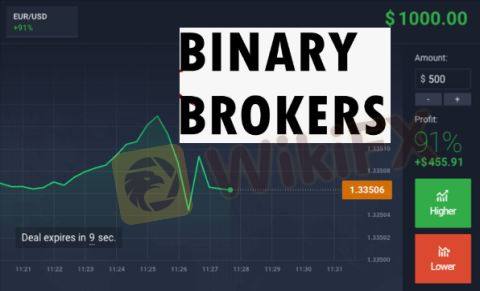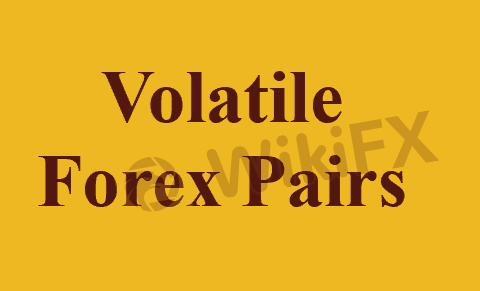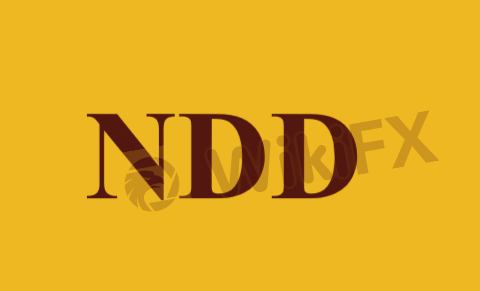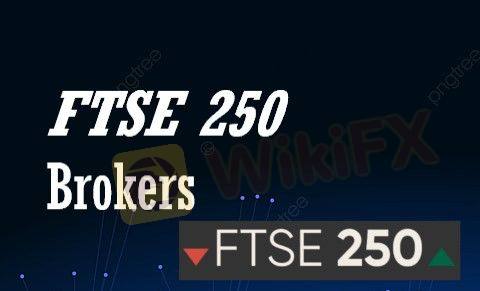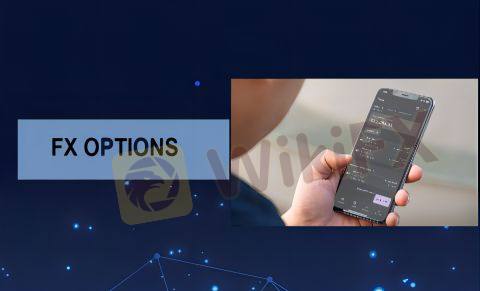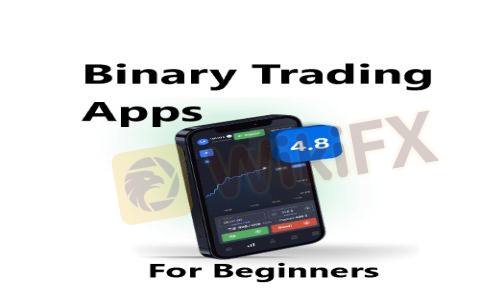As a forex trader, one of the most important is to understand forex pairs. Do you know what are exotic currency pairs and how to trade them?
In this article, WikiFX will examine the basics, pros & cons of exotic currency pairs, as well as some common trading strategies and tips to help beginners learn more about forex trading.

Q: What is WikiFX?
A: WikiFX is a professional, global forex broker regulatory inquiry tool with extensive and easily accessible data on almost 60,000 FX Brokers around the globe. You can learn about the Forex Industry, News, Educational Resources, and more at “wikifx.com”.

What are Exotic Currency Pairs?
Before trading exotic currency pairs, traders should be aware of what are exotic currency pairs.
The exotic currency pair is one of three currency pair types, the other two types are major currency pairs and minor currency pairs/crosses.
So, what are currency pairs then?
The currency pair refers to the currency that is traded in pairs, made up of a base currency (the first currency) and a quote currency. It represents the amount of quote currency youll need to buy one unit of the base currency.
Simply put,
Currency Pairs: Base Currency + Quote Currency
e.g. EUR/USD
EUR (Euro) is the base currency, and USD (US Dollar) is the quote currency.
As we have now gained a basic understanding of currency pair meaning, let's move on to currency pair types.

Type 1: Major Currency Pairs
The most traded currency pairs are majors, which come from countries with large economies and are politically and economically stable. Consequently, major forex pairs have higher liquidity.
Eight major currencies exist, but only seven major pairs. The major currency pair contains a major currency and the US Dollar.
All 8 major currencies include:
USD (US Dollar)
EUR (Euro)
GBP (British Pound)
CHF (Swiss Franc)
AUD (Australian Dollar)
CAD (Canadian Dollar)
NZD (New Zealand Dollar)
JPY (Japanese Yen)

Aside from the US dollar, the Euro is usually regarded as the second most valuable currency, while the Japanese Yen is the most popular and strongest currency in Asia. The British Pound is also still highly valuable and is typically traded after the US dollar, Euro, and Japanese Yen.
All 7 major currency pairs are as follows:
EUR/USD (Euro US/Dollar)
GBP/USD (British Pound/US Dollar)
USD/JPY (US Dollar/Japanese Yen)
USD/CHF (US Dollar/Swiss Franc)
USD/CAD (US Dollar/Canadian Dollar)
AUD/USD (Australian Dollar/US Dollar)
NZD/USD (New Zealand Dollar/US Dollar)

Type 2: Minor Currency Pairs/Crosses
Minor currency pairs, also known as 'crosses', have less liquidity than majors. Therefore, it is common for traders to make more forex trades with minor currencies to reduce trading costs. The minor currency pair consists of two major currencies except for the US Dollar. The most traded minor pairs include the Euro, Japanese Yen and British Pound.
Euro crosses:
EUR/GBP (Euro/British Pound)
EUR/CHF (Euro/Swiss Franc)
EUR/CAD (Euro/Canadian Dollar)
EUR/AUD (Eur0/Australia Dollar)
EUR/NZD (Euro/New Zealand Dollar)
EUR/JPY (Euro/Japanese Yen)
Yen crosses:
CHF/JPY (Swiss Franc/Japanese Yen)
AUD/JPY (Australian Dollar/Japanese Yen)
GBP/JPY ((British Pound/Japanese Yen)
CAD/JPY (Canadian Dollar/Japanese Yen)
NZD/JPY (New Zealand Dollar/Japanese Yen)
Pound crosses:
GBP/AUD (British Pound/Australian Dollar)
GBP/CHF (British Pound/Swiss Franc)
GBP/CAD (British Pound/Canadian Dollar)
GBP/NZD (British Pound/New Zealand Dollar)

Type 3: Exotic Currency Pairs
The exotic currency pair is a combination of one of the eight major currencies and a currency from a developing or emerging economy. In addition, there are many popular exotic pairs composed of two exotic currencies. Generally, most traders who are involved in exotic pairs trade an exotic currency against a major currency.
Example 1: a major currency + an exotic currency
USD/ZAR (US Dollar/South African Rand)
CHF/SEK (Swiss Franc/Swedish Krona)
MXN/JPY (Mexican Peso/Japanese Yen)
Example 2: an exotic currency + an exotic currency
NOK/TRY (Norwegian Krone/Turkish Lira)
TRY/RUB (Turkish Lira/Russian Ruble)
TRY/SGD (Turkish Lira/Singapore Dollar)

Pros & Cons of Trading Exotic Currency Pairs
Exotic currency pairs have two apparent features, namely high volatility and low liquidity, and they have led to many benefits and drawbacks while trading them. Consider the following pros & cons before trading exotic currency pairs:
Pros
Exotic forex pairs are not as widely traded as majors and crosses. However, many traders still prefer them due to their benefits.
- Greater Profit Potential
Compared to the majors, the number of traders trading exotic forex currency pairs is small. Since comparatively fewer people trade exotics, opinions are more homogeneous. In the event of fundamental changes, the consensus among this relatively small number of players can quickly change, resulting in extreme price movements.
As a result, exotic currencies tend to be less stable and can move more rapidly than major currencies. This increased volatility can provide a chance for greater profit.

- More Predictable
If you trade exotic currencies against a very strong currency, such as the US dollar, exotic currencies can be more predictable to trade than majors or minors.
When you compare the charts of two different exotics paired with the US dollar, the price movements may even be almost identical. Due to the US dollar's strength, anything that may affect the price of another exotic currency is overpowered by the US dollar; the US dollar is essentially the driver of the pair's price.
In theory, this means a trader with a good understanding of the US dollar could trade several exotic pairs simultaneously and make a lot of money.
- Expose to Certain Economies
It is possible to gain exposure to certain economies by trading exotic currency pairs. For instance, oil prices are often proxied by the Mexican Peso. Traders may buy USD/MXN if they believe oil prices will rise.
Cons
On the other hand, exotic currency pairs also have some drawbacks, and not every trader can handle the high risk involved.
- Wider Spreads
There is less liquidity for the exotic currency pair since it is not frequently traded. As a result, there is less money moving between exotic currency pairs. A lack of liquidity can result in wider spreads and make it harder to get into and out of trades at your desired price. Therefore, when trading exotics, more capital may be required to compensate for the higher spreads.
As compared to major currency pairs, which have quite tight spreads (e.g. EUR/USD's spread is just 1.5 pips on average), exotic currency pairs may even have spread over 100 pips.
- Higher Risk of Loss
Due to the high volatility, while trading exotic currency pairs, prices change quickly and drastically. Despite its potential for higher profits, it also carries a higher risk of loss. Because of this, exotic forex pairs are often considered the most volatile and risky forex pairs to trade.
Additionally, government policies can change without warning, causing big shifts in exotics. A developing country's currency can depreciate rapidly due to market conditions or central banks.

- Inadequate Infrastructure
It is common for exotic currency pairs to have less developed infrastructure than major currencies. As a result of this lack of infrastructure (Analysis, research, and news releases), it can be difficult to find reliable data and information about the pair. The fact that fewer platforms offer trading in these pairs can also make it harder to execute trades.
In a word, trading exotic currency pairs can provide exciting opportunities for higher returns and more volatility than other currency pairs, but there are also risks involved. Exotic currency pairs are recommended only to experienced traders who understand the risks involved.
Strategies for Trading Exotic Currency Pairs
There are various strategies for trading exotic currency pairs. Every strategy has its strengths based on the market condition, trading currency, trading plan, as well as trading style. The following are a few common strategies you can consider:
Strategy 1: Breakout Trading
A breakout trading strategy seeks to profit from price movements that break out of a consolidation. You should buy or sell when the price breaches historical support or resistance level. A strong technical and fundamental analysis of price movements is required.

Strategy 2: Range Trading
A range trade involves trading within a set range of support and resistance. Traders aim to profit from range peaks and troughs.
Strategy 3: Carry Trading
When a carry trade is conducted, funds are borrowed from a currency with a low interest rate to invest in a currency with a higher return.
Strategy 4: Trend Trading
A trend trading strategy seeks to profit from the continuation of a trend. To enter trades in the direction of an existing trend, traders will look for pairs already in a strong uptrend or downtrend.
These are just a few of the many forex trading strategies you can use. Before branching out into uncharted territory, make sure you learn as many trading strategies as possible and focus on one currency until you become well equipped.
Tips
You should become familiar with the relationship between the two nations if you begin trading exotic pairs. In general, exotic pairs are not so well known and it can be difficult to determine why prices change. Exotics are usually traded by people who live in exotic countries. It is more likely that they understand the economic situation in that country.
Whats more, it's crucial to remember that trading success depends on managing risk well. Risk management is a good way to minimize your trading risks. As well, every trader should try trading on a demo account, which is a risk-free environment. With a demo account, you can trade with virtual funds without risking your real money.

Conclusion
In summary, it is not a good idea to begin trading exotic currency pairs if you are fairly new to the forex market. Compared to majors and minors, they are highly volatile, less liquid, and have higher spreads. Trading currency pairs from majors or minors can be better since there is more trade activity and lower spreads. As you gain experience, you can try trading exotic pairs with a demo account since their risks could be worthwhile.
Remember that lack of knowledge is the greatest risk in trading exotics. WikiFX recommends you educate yourself enough and do more research before starting forex trading. If you want to trade like a pro, you should educate yourself enough and do more research on the brokers that you are interested in before you start trading. Visit our website (https://www.WikiFX.com/en) or download the WikiFX APP now to learn more about forex-related information and resources.

You Also Like

7 Best Forex Brokers with Instant Withdrawals in 2024
Explore the top 7 Forex Brokers offering instant withdrawals. Enjoy secure, fast trading and quick access to your earnings.

8 Best CFD Brokers in 2024
Analyze the top 7 CFD brokers, focusing on their regulatory compliance, performance, and customer satisfaction.

Best Brokers with Instant Deposits for 2024
In this article, we’ll explore five top brokers that offer instant deposits, allowing you to quickly fund your trading account and seize market opportunities without delay.

Best PayPal Forex Brokers for 2024
Discover top Forex Brokers that use PayPal, understand how transactions work, consider the pros & cons, and make your Forex trading plan!



